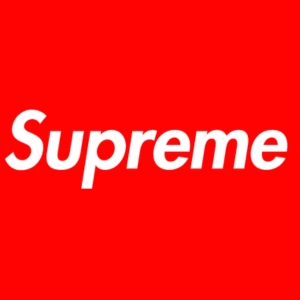In recent years, the children’s fashion industry has experienced a remarkable transformation. Once considered an afterthought in the fashion world, kids’ wear has evolved into a vibrant and competitive sector, boasting a plethora of brands dedicated to creating stylish, comfortable, and sustainable clothing for children. This blog explores the rise of kids wear brands, highlighting key players, trends, and the driving forces behind this burgeoning market.
The Emergence of Kids Wear Brands
Historical Context
Historically, children’s clothing was often an extension of adult fashion, with little consideration for the unique needs and preferences of young wearers. However, the late 20th century marked a shift as parents began to seek out more specialized and diverse options for their children. This demand led to the birth of several pioneering kids wear brands, setting the stage for the vibrant market we see today.
The Influence of Celebrity Culture
One of the significant catalysts for the rise of kids wear brands has been celebrity culture. High-profile celebrities, such as Kim Kardashian and Beyoncé, often dress their children in designer outfits, creating a buzz around kids’ fashion. Brands like Gucci, Burberry, and Dolce & Gabbana have seized this opportunity, launching dedicated kids’ lines that mirror their adult collections, thus blurring the lines between adult and children’s fashion.
Key Players in the Kids Wear Market
Established Brands
Several established brands have made significant inroads into the kids’ wear market. These brands leverage their strong reputations and extensive resources to create high-quality, fashionable clothing for children.
As one of the oldest and most trusted names in children’s apparel, Carter’s has maintained its dominance by offering affordable, durable, and stylish clothing for newborns to toddlers. Their focus on comfort and practicality has earned them a loyal customer base.
A subsidiary of the iconic Gap brand, Gap Kids combines classic American style with playful designs. Known for their quality basics, Gap Kids offers a wide range of clothing options, from casual wear to school uniforms.
Emerging Brands
In addition to established players, several emerging brands have gained prominence by focusing on niche markets and innovative designs.
A Swedish brand known for its quirky, eco-friendly designs, Mini Rodini has become a favorite among environmentally conscious parents. Their commitment to sustainability and ethical production practices sets them apart in the crowded market.
Hailing from Barcelona, Tiny Cottons combines high-quality fabrics with playful, graphic prints. Their collections often tell a story, creating a unique and engaging shopping experience for both parents and children.
Trends Shaping the Kids Wear Industry
Sustainability
As awareness of environmental issues grows, sustainability has become a significant trend in the kids wear industry. Brands are increasingly adopting eco-friendly practices, from using organic and recycled materials to ensuring fair labor conditions. Parents today are more conscious of the environmental impact of their purchases, and they seek out brands that align with their values.
Gender-Neutral Fashion
The concept of gender-neutral fashion has gained traction in recent years, challenging traditional notions of “boys’ clothes” and “girls’ clothes.” Brands like Tootsa MacGinty and Mabo Kids offer unisex collections that encourage children to express themselves freely, regardless of gender. This trend not only promotes inclusivity but also simplifies shopping for parents.
Technology Integration
The integration of technology into kids’ wear is another exciting development. From smart fabrics that monitor body temperature to interactive clothing with built-in games, technology is transforming the way we think about children’s fashion. Brands like Cubo Ai and Owlet have introduced innovative products that blend fashion with functionality, offering parents peace of mind and children an engaging experience.
Personalized Clothing
Personalization has become a key trend in the kids wear market. Brands are offering customized clothing options, allowing parents to add their child’s name, initials, or favorite motifs to garments. This trend enhances the uniqueness of the clothing and creates a deeper emotional connection between the child and their wardrobe.
Challenges and Opportunities
Fast Fashion vs. Sustainability
One of the primary challenges facing the kids wear industry is balancing fast fashion’s demand for trendy, affordable clothing with the need for sustainable practices. While fast fashion brands like H&M and Zara have introduced kids’ lines that offer stylish clothing at low prices, they have also faced criticism for their environmental impact. Conversely, sustainable brands often come with higher price tags, which can be a barrier for some consumers.
Online Shopping and E-Commerce
The rise of e-commerce has opened up new opportunities for kids wear brands. Online shopping offers convenience and a wider selection of products, making it easier for parents to find the perfect outfit for their child. However, it also presents challenges, such as ensuring accurate sizing and managing returns. Brands are investing in virtual fitting rooms and AI-driven recommendations to enhance the online shopping experience.
Cultural Diversity and Inclusivity
As the global population becomes more diverse, there is a growing demand for kids’ clothing that reflects various cultures and traditions. Brands that embrace cultural diversity and inclusivity in their designs are likely to resonate with a broader audience. This trend is exemplified by companies like Tea Collection, which draws inspiration from different countries for each collection, celebrating global diversity.
The Future of Kids Wear
Looking ahead, the future of kids wear appears bright, with continued innovation and growth on the horizon. Brands are likely to focus on enhancing sustainability, incorporating technology, and embracing inclusivity. The rise of digital and social media will also play a crucial role, as brands leverage these platforms to engage with young consumers and their parents.
Sustainability as a Standard
As sustainability becomes a non-negotiable aspect of fashion, kids wear brands will need to integrate eco-friendly practices into every aspect of their operations. This shift will likely lead to increased transparency in supply chains and greater investment in sustainable materials and production methods.
Enhanced Personalization
Advancements in technology will enable even greater levels of personalization in kids’ clothing. From customizable prints to adaptive clothing that grows with the child, brands will offer innovative solutions to meet the evolving needs of their young customers.
Global Expansion
With the increasing interconnectedness of the world, kids wear brands have the opportunity to expand their reach globally. Brands that can adapt to different markets and cultural preferences will thrive in this new landscape, offering unique and diverse collections that appeal to children and parents worldwide.
Conclusion
The rise of kids wear brands marks a significant shift in the fashion industry, driven by changing consumer preferences, technological advancements, and a growing emphasis on sustainability. As established brands and new entrants alike continue to innovate and adapt, the future of children’s fashion looks promising. Parents today have more options than ever, ensuring that their children can dress in style, comfort, and consciousness. The kids wear market is not just about clothing; it’s about creating a positive impact on the world while celebrating the joy and creativity of childhood.





